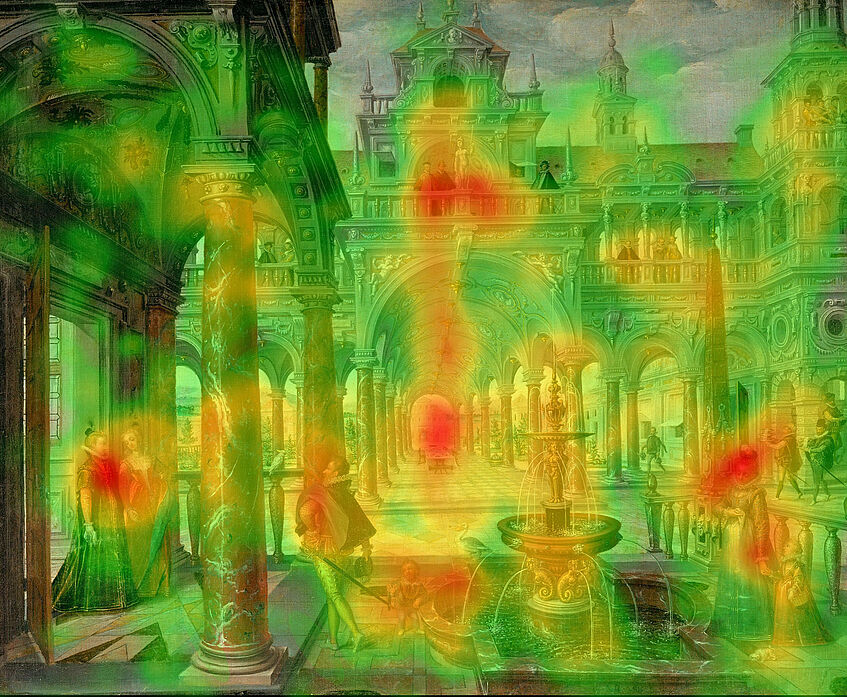Eye Tracking and Linear Perspective
Arthur Crucq
Study (November 2017 – January 2018)
Linear perspective was invented in the fifteenth century as a pictorial means to provide an accurate depiction of three-dimensional space on the flat surface. In linear perspectival pictures the central vanishing point is the determinative point placed on the horizon within the picture plane where all the diagonals meet. In many perspectival pictures, the vanishing point coincides with the geometrical centre of the image. Psychological research about the perception of pictures shows that participants tend to focus on the centre of pictures first. This makes the geometrical centre of a picture a good and clear point of reference with regard to studying the effect of the central vanishing point on the viewing behaviour of the observer and to understand the extent to which the view of the observer would indeed been drawn towards the central vanishing in a perspectival picture in comparison with attention for other visual elements such as depicted objects and figures.
In this study the conditions are investigated under which the vanishing point attracts the view of the observer in relation to the geometrical centre of a picture and/or important objects and figures. The aim is to provide a further understanding of why artists might have used the placement of figures and objects on or near the vanishing point and whether this can be considered a rhetorical strategy exploiting certain human perceptual principles.

